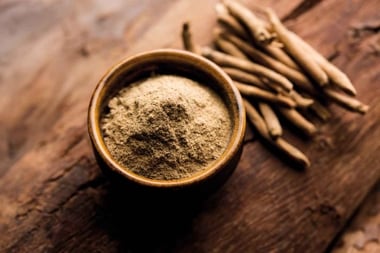Clean Water
Tap water can contain hundreds of different chemicals from industrial and agricultural sources. Municipal tap water is often bleached, disinfected and deodorized, all processes which add dozens of chemicals. These chemicals can be ingested by drinking tap water and also absorbed through the skin and lungs during showering or bathing.
Tap water can contain hundreds of different chemicals from industrial and agricultural sources. Municipal tap water is often bleached, disinfected and deodorized, all processes which add dozens of chemicals. These chemicals can be ingested by drinking tap water and also absorbed through the skin and lungs during showering or bathing.
Since the body is mostly composed of water, and water is the number one survival need, try to drink the purest water possible. Use filtered tap water or bottled water for drinking and cooking. The quality of bottled water can vary considerably. Do some research before deciding which type to buy.
Several types of water filtration systems are available, each with different costs and effectiveness. The most common method is the granular, activated carbon filter that attaches to a tap or a jug filtering system. They are inexpensive and ineffective. Because of the large pore size, they filter out chlorine, organic chemicals, some bacteria and viruses, and some asbestos but not fluoride, or smaller particles and micro-organisms. Filters need to be replaced often since they become filled with bacteria and sediment. Most contain activated silver to kill bacteria and can precipitate silver toxicity.
Solid carbon blocks are very dense and the smaller pores are able to remove most contaminants except fluoride. Micro-organisms are unable to thrive in the pores since they hold very little oxygen. Although the carbon lasts longer than activated carbon, it does need to be changed regularly.
Reverse osmosis systems use a multi-step filtration process with pressure, usually from tap water. Reverse osmosis removes particulate matter, organic chemicals and heavy metals. This system is slow, bulky and not very water efficient: it returns one gallon of filtered water for every three to twelve gallons of unfiltered water.
Distillation systems boil water and collect the steam. This process removes all minerals and organic chemicals, except for some volatile chemicals. Volatile chemicals can be removed by using a carbon filter as a preliminary measure.
Micro Water
Micro water is the electrolysis of water. Water is divided into two parts by the process of electrolysis to become either alkaline or acid. First, a silver- impregnated carbon block filters tap water to remove chemicals and contaminants. Then, water is broken down into its two molecular polarities, alkaline and acid.
The human body balances between states of alkalinity and acidity. It knows at a cellular level what adjustments should be made to restore its optimal balance, so micro water should be used cautiously. Alkaline water contains minerals which, when ingested, can help stabilize over-acidic conditions in the body. However, if the body is already in an alkaline state, drinking alkaline water will have no benefit, and may in fact do more harm.
Acidic water, on the other hand, is excellent for external application to cuts or wounds as it will disinfect and heal tissues just as hydrogen peroxide would.
Magnetized Water
Ordinary water contains calcium carbonate. The harder the water, the more calcium carbonate it contains, and the less soap is able to lather in it. Calcium deposits eventually are formed on surfaces contacted by this water.
When they are magnetized, the calcium carbonate molecules in the water crystallize into tiny, circular structures that are easily washed away. Magnetized water is soft water. Soap lathers more easily in this water and there is no leftover soapy film. With the softer water, your skin and clothes become clean and soft, your dishes sparkle and you reduce the amount of detergent and soap you use by up to eighty percent.
Eastern Europe has long known the power of magnetized water for home and industrial use, and in parts of the former Soviet Union, magnetization was used instead of filtration. Drinking magnetized water is becoming more closely studied in many countries because of its reduced costs. Magnetized water is believed to have a higher oxygen content and to be more alkaline than regular filtered water, both of which are beneficial for the body.
If you have hard water, choose a salt-free water softener for a healthier, maintenance-free and environmentally sound approach to clean water.
Kitchen Waste-water Tips
Domestic use accounts for between ten percent and forty percent of all treated water. Of this, only a fraction is used for our biological needs. The rest is used for household appliances, washing and cooking.
- If you do the dishes by hand, wash and rinse in a partially filled sink and don't leave the water running. Running the water continuously can use from five to ten gallons a minute!
- Run the dishwasher on the "econo" cycle option and only when completely full.
- Wash veggies and fruit all at once after a shopping trip. Washing them individually before use takes up much more water (and time) in the long run.
- When cooking vegetables, use as little water as possible and a tight-fitting lid. This preserves both nutrients and water.
- Don't run the tap just to wait for cold water. Keep a jug in the fridge.
- Fix a leaky tap immediately. A dripping tap can send seven to eight gallons of water down the drain daily.
- "Water-Saver" faucet attachments can decrease water usage by twenty-five percent or more with no perceptible change in water pressure.




